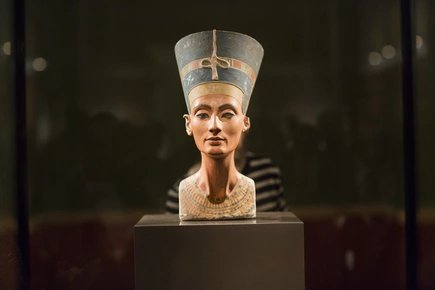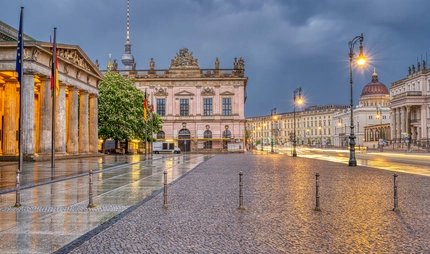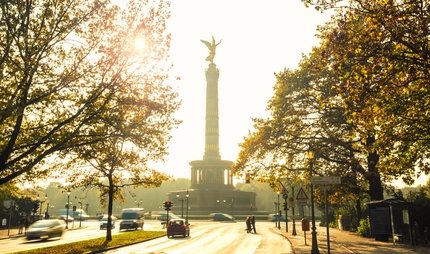
Brandenburg Gate
Symbol of German reunification
Brandenburg Gate is the first stop for every visitor to Berlin! The city’s iconic landmark offers fascinating insights into the city’s history.
The Brandenburg Gate is one of the most iconic sights in today’s vibrant Berlin. More than just Berlin’s only surviving historical city gate, this site came to symbolise Berlin’s Cold War division into East and West – and, since the fall of the Wall, a reunified Germany. Architecturally, the sandstone Brandenburg Gate also represents one of the earliest and most attractive examples of a neo-classical building in Germany.
History – the Brandenburg Gate

Constructed between 1788 and 1791, the Brandenburg Gate was Berlin’s first Greek revival building. Designed by Carl Gotthard Langhans, architect to the Prussian court, it was inspired by the monumental gateway at the entrance to the Acropolis in Athens. The Brandenburg Gate is 26 metres high, 65.5 metres long and 11 metres deep, and supported by two rows of six Doric columns.
In 1793, the gate was crowned by the Quadriga statue, designed by Johann Gottfried Schadow. This statue also has its own story to tell. In 1806, when Napoleon’s army took Berlin, the French Emperor had the Quadriga transported to Paris as war booty and a sign of his victory. In 1814, after Napoleon’s forced abdication, the Quadriga was returned to Berlin where it once again adorned the Brandenburg Gate, facing towards the east and the city centre.
In 1946, with the post-war division of Germany and Berlin, the Brandenburg Gate was in the Soviet sector. When the Berlin Wall went up in 1961, the Gate stood in an exclusion zone in an arc of the Wall, inaccessible for locals and visitors alike. When the Wall fell, 100,000 people gathered here for the Brandenburg Gate’s official opening on 22 December 1989 – and soon afterwards, crowds thronged the area to celebrate their first joint New Year’s Eve in this once-divided city. Today, more than almost any other of the city’s landmark sights, the Brandenburg Gate symbolises a reunited Berlin.
Architecture – Pariser Platz square
The Brandenburg Gate faces Pariser Platz, regarded as one of the city’s most attractive squares. By the end of the Second World War, the buildings around this historical square were in ruins. Reconstruction at this prime location only started in the 1990s after German reunification, and the buildings now include elegant town houses, embassies and the impressive five-star Hotel Adlon.
The Max Liebermann Haus and the Haus Sommer, set to the left and right of the Brandenburg Gate, were designed as a matching pair in a style inspired by the architecture of the Prussian master builder and court architect Friedrich August Stüler. This historic location is also home to two other prominent buildings housing the embassies of France and the United States.
Berlin Tourist Info directly at the Brandenburg Gate
At the Berlin Tourist Info in the south wing of the Brandenburg Gate, you can find a wealth of information on the top sights and activities in the city – and can also book hotels or tickets for events! This is also the perfect starting point to discover the sights around the Brandenburg Gate, including:
- the Reichstag – the German Bundestag
- Unter den Linden boulevard
- the Memorial to the Murdered Jews of Europe
- the Victory Column (Siegessäule)
- Tiergarten Park



